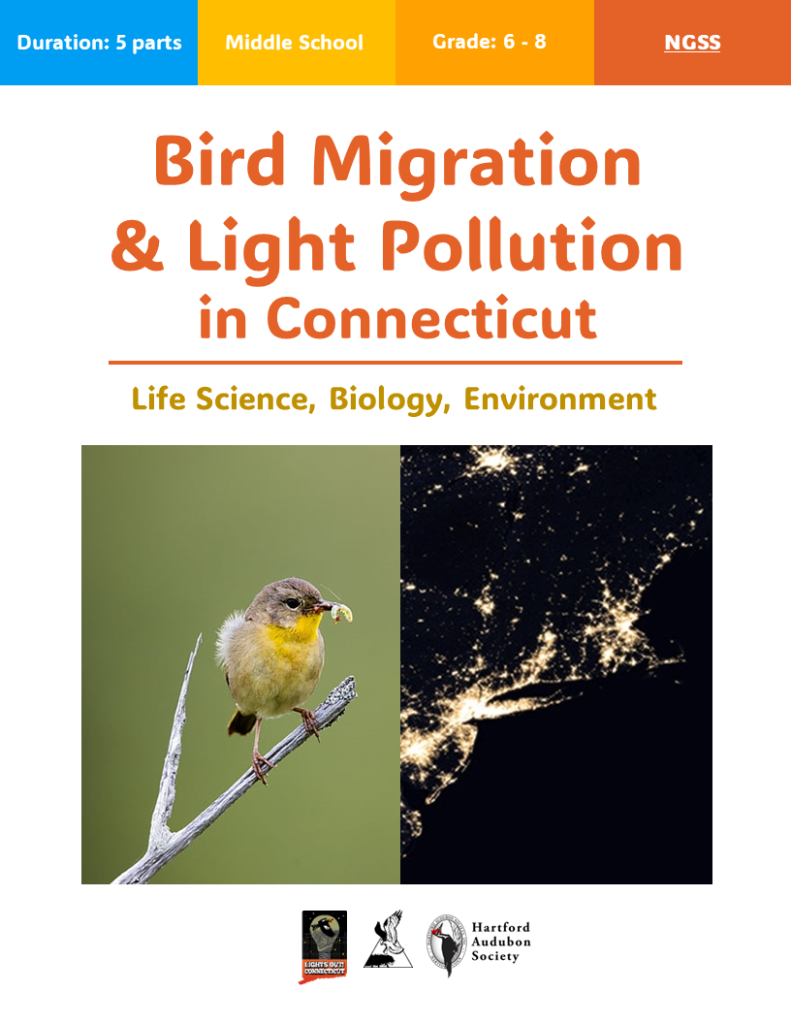Connecticut is currently in the midst of the nightly transformation of its skies into a superhighway for millions of migratory birds. Beginning in late summer and continuing into mid-November, hundreds of migratory species of birds journey along our coastal corridor, known as the Atlantic flyway, to their wintering and nesting sites in the Southern Hemisphere.
For most of us this is an invisible show, but our actions on the ground have a dramatic impact on its success. Eighty percent of migratory birds in North America migrate at night and light pollution, windows, domestic pets, exposure to pesticides and habitat destruction are among the humankind perils that contributed to the massive loss of billions of birds from the landscape since 1970. Far too many of these birds meet their end while traveling along the flyway.
This annual spectacular show will be at its height on October 12, World Migratory Bird Day. Among those in the audience watching for migratory birds will be a sampling of excited middle schoolers from across the state. These students are part of a cohort of sixth, seventh and eighth grade students who are completing a new science curriculum designed to turn middle school students into migratory bird sleuths. They will discover how our actions on the ground dramatically impact the success of these little travelers in the sky.
The goal of the five-part lesson plan for middle school science classrooms is to increase learning and engagement by young people about bird migration—and to heighten their awareness of the challenges that migratory birds face and to introduce them to ways to help. Human-made risks for birds are accelerating – particularly light pollution — and we urgently need to change our actions on the ground to improve the safety of those traveling the skies. The lesson plan is an educational tool developed by Lights Out Connecticut, a non-profit project of Menunkatuck Audubon Society, that works to reduce the risks of artificial nighttime lighting for migratory birds.
Designed by Catherine Ferreri, a sixth-grade science teacher at Coleytown Middle School in Westport, and Meredith Barges, a bird-friendly building expert, this five-part learning module meets CT Next Generation Science Standards. “The lesson plan includes life sciences, ecology and the environment,” Ferreri says. “Students learn about how birds navigate on their journey, how they forage. Students are being cultivated as scientific thinkers as they learn how to use this data to make models and then how to use data collaboratively to fully understand the negative impacts of light pollution on migration.”
The lesson plan is available as a free PDF from the Lights Out CT website for any school that wishes to adopt it. Opening with a game, this curriculum equips learners with the necessary skills and knowledge to extend their understanding of light pollution and its effects on migratory bird populations. Since the story of the impact of light pollution on bird migration is not always happy, Ferreri has worked to find an honest but hopeful balance. “When I started this project even I didn’t realize how massive bird mortality was during migration,” she admitted. “So we present the wonder of birds to begin with, eventually leading into human impact on migration and the mortality piece. Then quickly we jump into solutions and some of the really cool organizations taking action to help.”
Lights Out Connecticut hopes by getting this learning module into as many classrooms across Connecticut as possible it will be a passing of the baton to the next generation for the stewardship of our night skies during migration. “Millions of birds can fly over Connecticut at night during migration and the skies are dangerous,” Craig Repasz, past president of the New Haven Bird Club, warns. “We need young people to be ready to continue the efforts to educate about the dangers of artificial light.”
A recent outgrowth of this new concern of the dangers of light pollution on birds has been a heightened awareness that there are also negative health consequences for humans. Unnecessary light pollution is linked to problems including sleep disorders, depression, increased risk of obesity and cancers. As Connecticut’s students learn how to help our avian friends they will also be discovering tools for good selfcare of their own health.
Janice Ross is a volunteer at Lights Out CT and a resident of Guilford.

